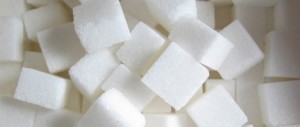Do you know that the consumption of sugar has increased by 20% since 1970? Some people are consuming a lot of it. Soft drinks are the number one source of added sugar in the American diet. And this doesn’t curb appetite. The more sugar consumed the more the brain signals GIVE US MORE!!!!!

If you are just beginning to learn about the ingredients and nutritional facts on various packaged products, you might think you are sitting in the middle of a pile of white granulated stuff known as sugar! Hopefully your eyes are still open!
Once you learn how many different forms of sugar exist, you’ll need to know more about the terminology associated with any product. Sugar comes in various forms, names, colors and textures. The relationship between how sugar affects our health has been well documented. More on that later.
In its basic form white granulated table sugar is also known as sucrose. This is the most common form. However, corn sweeteners (high fructose corn syrup), glucose syrup, and dextrose, honey, lactose, maltose and maple syrup) are also sugar! To generate sugar into these forms the process is known as refinement. Refinement involves washing, crystallizing, clarifying and filtering raw sugar to remove plant matter and molasses to the final product, which is white sugar.
Some myths surround sugar. Such as sugar (by itself) causes diabetes. It doesn’t! The official word from the American Diabetes Association is that sugar does not cause diabetes. However, consuming too many sweetened foods can contribute to becoming overweight which can contribute to obesity. Being overweight can increase the risk for developing diabetes.
It is important to know that words ending with –ose also mean sugar. Such as lactose. This is a natural sugar found in milk. Dextrose is a commercial name used for crystalline glucose produced from starch. If the crystallized dextrose (glucose) contains no water, it is listed as “dextrose anhydrous” or “anhydrous dextrose” in an ingredient statement. Dextrose is used in many baking products like cake mixes and frostings, snack foods like cookies, crackers and pretzels, desserts like custards and sherbets. Dextrose is also used as a filler in the single-serve, table-top packets of common artificial sweeteners.
However, not all sugar has the -ose on the end of their designation. Other forms are known as corn syrup and corn syrup solids. Corn syrup may also be called “glucose syrup” in an ingredient list.
High-fructose corn syrup is roughly half fructose, which goes largely to the liver, so it doesn’t raise blood sugar. But the glucose half of high-fructose corn syrup heads straight to the bloodstream. However, fructose ends up in the liver whether you need the calories or not. Very little fructose stays in the bloodstream.
Sugar alcohols such as sorbitol, mannitol, maltitol, erythritol and hydrogenated starch hydrolysates, are manufactured from cornstarch. Xylitol, another common sugar alcohol, is manufactured from such sources as corn cobs, sugar cane bagasse (stalk residue remaining after sugar extraction), or birch wood waste. Isomal and lactitol are becoming more common and are manufactured from sucrose and whey, respectively. Isomalt and lactitol are commonly called bulk sweetened because their sizes are nearly the same as sugar.
Be cautious with alcohols because they can increase blood sugar levels. And for some people sugar alcohol can cause diarrhea.
Recently agave nectar has been getting a lot of advertising in the health food stores. This is a syrup made from the succulent that grows in Mexico. It resembles honey. However, it tastes less sweet. Being promoted as the perfect natural sweetener for diabetics as it is considered to have a low glycemic index. Agave nectar is lower then other nutritive sweeteners. No available studies have evaluated the specific effects of agave on blood sugar levels. Enjoy it in moderation.
Agave nectar is considered to be a processed sweetener that is less processed than high fructose corn syrup, but more processed than honey. But the main sweetener in agave nectar is fructose. Agave nectar has about the same number of calories as table sugar (16 calories per teaspoon), but it’s sweeter. Therefore less is needed.

